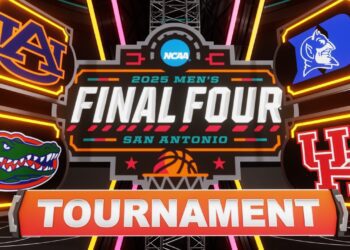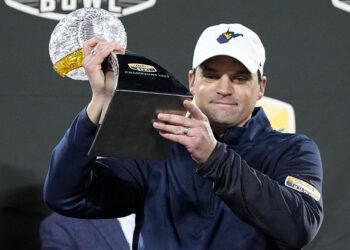Here we are again.
Another year and the state legislature is attempting to override the rules of the West Virginia Secondary Schools Activity Commission. Last year it was the transfer rule, one I was in favor of.
This year it’s Senate Bill 813, one that would allow student athletes to play a travel sports in-season. If you play basketball for your local high school, you could play for an AAU team during the season. The same applies for sports such as soccer, volleyball, softball, baseball, etc. That’s not one that I can get on board with.
It opens a can of worms.
There’s the power struggle that will likely take place between AAU and high school coaches with the student athletes pulled in different directions and forced to balance those workloads or abandon one altogether. More on that later.
There’s also the knee and hip replacements and shoulder surgeries that will be required when the kids are 40.
The day after the Wyoming East girls basketball program won the Class AA state championship in May of 2021, all-state guard Abby Russell pushed herself and went to her AAU team’s practice. Assistant coach Ryan Davidson along with several teammates pleaded with Russell to take a week off after a grueling, physical four-day stay in Charleston that saw her consistently guard the opposing team’s best player.
“I was sore,” Russell said. “My legs, I couldn’t really feel them, but I thought I could do it.”
Russell tore her ACL in that practice. Since then she’s advocated for players taking more time off.
Most teams in W.Va schedule a 22-game regular season with practices on days there aren’t games. Allowing travel participation during the season means weekend tournaments that could add north of 10 games to that season. On top of that you’re adding AAU practices to the schedules increasing the likelihood of burnout.
This doesn’t apply to just the high school level.
In the NBA load management has been a heated topic for nearly a decade.
In 2011 the NFL did away with two-a-day practices and put limitations on the number of full-contact padded practices a team could conduct throughout the season.
If the most talented, high-level leagues in our country with access to recovery resources most of us couldn’t fathom are all in on easing workloads why does it seem like a good idea to eradicate the barriers that currently protect young athletes?
And the load management problem the NBA has? In ways it can be traced back to overuse in youth basketball.
A story from ESPN in 2019 addressed the issue described incoming NBA players as “ticking time bombs.” Numerous are deemed broken before they even get to college.
Through dozens of interviews over the past two years with NBA team and league officials, current and former players, AAU coaches, parents, youth players, researchers, medical and athletic training officials in and around the NBA, as well as those intimately involved with youth basketball, one possible answer repeatedly emerged: Players, they say, are physically broken down by the time they reach the NBA.
“It is grave,” says one NBA general manager, who says his team’s injury databases on players entering the draft, dating back decades, leave “no question” that there are more orthopedic issues among young players in recent years. “It’s very sad, where a kid has an NBA body, he’s got NBA talent, he’s got even an NBA mentality, but he doesn’t have a body that can withstand the rigors of the training and the actual games, whether it’s to get to the NBA or just to hold up. It’s a tough deal.”
Silver, in an interview with ESPN, calls the issue “the highest priority for the league — and I think both in terms of the health and wellness of the players in the NBA, but also the larger category of millions of players, boys and girls, not just in the United States, but globally.”
“It’s an epidemic,” says Leo Papile, who founded and has coached the Boston Amateur Basketball Club on Nike’s Elite Youth Basketball League circuit — arguably the most prestigious grassroots circuit — for four decades.
“I have many kids who are going to go play in college next year,” says Dr. Neeru Jayanthi, the Director of Sports Medicine Research and Education at Emory Healthcare in the Atlanta area and one of the leading researchers on youth sports, “and this whole year has just been about trying to get healthy so they can step on that doorstep as a freshman and actually have a chance to participate.”
Says Jayanthi: “Kids are broken by the time they get to college.”
I would argue that no professional American league has done more to grow its sport globally than the NBA. So for Adam Silver, the commissioner of said sport, to have a pointed opinion on it speaks volumes. Her’s privy to the research surrounding an epidemic that impacts the league he governs.
In 2016 the NBA, in conjunction with USA Basketball, set out to address the issues in youth sports, specifically basketball, by releasing a set of guidelines and recommendations concerning the amount of practices and games each age level should be participating in on a weekly basis.

The physical rigors of sports such as volleyball and soccer fall under a similar umbrella as well. Baseball and softball vary but the common thread there is overuse injuries in pitchers. Do we think it’s a good idea to try and ask a kid that pitched two games for his high school team to pitch in a travel ball tournament that same weekend?
And before you say that wouldn’t happen I’ve had coaches tell me they don’t agree with the parameters and restraints put on pitchers throughout West Virginia. Several, including those I respect, prefer the innings count as opposed to the pitch count.
Dr. Greg Elkins, the chair of the National Federation of State High School Associations on sports medicine also serves on the W.Va Sports Medicine Advisory Council.
He looked specifically into SB 813 and offered his thoughts.
“The Sports Medicine community in general and the SSAC Sports Medicine Committee have always had concerns about overuse and overuse injuries in our student athletes,” Elkins said. “Specifically we have supported limitations on pitches (pitch counts) and competition exposures (quarters played per week, matches wrestled per day and season, etc.) This bill would essentially eliminate those limitations and lead to an increase in overuse injuries.
“In addition, recent studies have shown participation in high school sports is safer than travel sports. In particular, Dr Jonathon Drezner et al. report a higher rate of survival of sudden cardiac arrest in athletes participating in high school basketball that in travel basketball. There are other potential consequences if there is a shift toward travel sports from education based sports.”
Aside from the overuse aspects, the allocation of time and burnout come into play. How does one manage the high school slate of practice and games in addition to a travel schedule? You’re piling on extra practices and a weekend of tournaments.
What happens when a month into the season it becomes evident that the pace is unsustainable for the athlete? Most players pay to be a part of travel ball teams while the high school experience is free. Which direction do you think they’ll go? The one where they’ve spent their money would be my guess. And the reality is whether it comes from a high school coach or a travel coach, pressure will inevitably be applied to commit more one way or another.
Let’s make that decision easier by taking it off the table.









